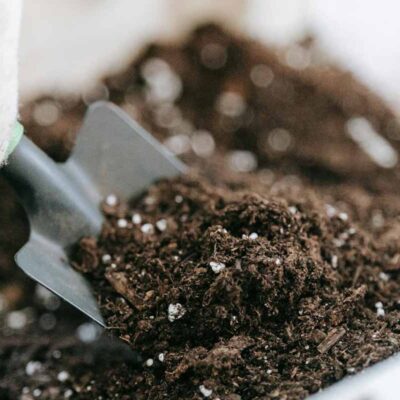Balancing pH for Healthier Plants: A Beginner’s Guide

Every gardener must master a few essentials when learning to grow plants at home. One of the most challenging is maintaining high-quality and properly balanced soil. Hydration and sun exposure are important, but the pH balance of soil can directly impact a plant’s health in many ways.
If you’re unsure where to start with pH balancing, you’ve come to the right place. This blog will teach you the basics and show you how to grow healthy plants that thrive.
Understanding Soil pH and Its Impact on Plant Health?
A soil’s pH level refers to its overall acidity or alkalinity. Potting soils create a great growing environment for plants. The material helps anchor roots, store water to keep plants well-hydrated and is a vital source of essential plant nutrients. However, not all soil is conducive to the growth cycle. Many factors can impact soil conditions, causing the pH balance to fall more on the acidic or alkaline side of the scale.
Why does that matter? The pH balance of soil determines nutrient availability. It directly affects how your plants absorb the micronutrients they need to flourish. Every plant has its preferred growing environment and soil pH. Learning how to grow plants requires a deep understanding of those preferred conditions, ensuring you can adjust and balance pH levels for ultimate results.
How to Grow Healthy Plants with pH Balancing
Whether using grow kits, containers or planting from seed outside, you must perform soil tests to understand what you’re working with. pH testing kits are readily available and easy to use. The pH scale varies from 0.0 to 14. The middle point of 7.0 is neutral. If your soil tests 7.0, it’s properly pH-balanced. Anything below 7.0 leans acidic, and everything above 7.0 is alkaline.
Once you know where your soil stands, do your due diligence to understand what your plants prefer. Most crop plants like slight acidity, preferring levels between 5.5 and 6.5. However, others may do best with pH levels on the more alkaline side of the scale or require precise balancing at the neutral level. Understand what your plants need to reach their full potential. Then, you can start amending your soil.
There are many ways to balance pH levels. If you need to raise the pH level and make the soil more alkaline, you can add materials like:
- Ground limestone
- Garden lime
- Wood ash
- Crushed eggshells
- Gypsum
Alternatively, soil that needs pH lowering can become more acidic with additives like:
- Sphagnum peat moss
- Compost
- Elemental sulfur
- Acidic fertilizers
Will Using Plant Nutrients to Improve Potting Soils Change pH Levels?
Achieving good pH levels before planting is not enough. You must also maintain good conditions as your plants grow. That may involve rethinking your approach to fertilization and plant nutrition. Traditional nitrogen-rich fertilizers and manure can throw off the soil’s pH balance. Nitrogen sources can contain or form ammonium, which naturally lowers pH levels due to its acidity.
Fortunately, some products make things easier. Some high-quality nutrients are pH buffered. Products from Supernatural Brand like Bud Blaster and Super Boost require little to no pH adjustments. They do the balancing for you as your plants absorb the nutrients in the soil.
Proper pH Balancing: Your Ticket to a Healthy Garden
As you can see, making pH adjustments and maintaining balance is easier than it looks. Using grow kits that help maximize nutrient absorption and eco-friendly plant food with pH buffering offers a hassle-free way to ensure your garden thrives in optimal conditions. Staying on top of pH levels can elevate your gardening game, helping you cultivate your healthiest plants to date!












